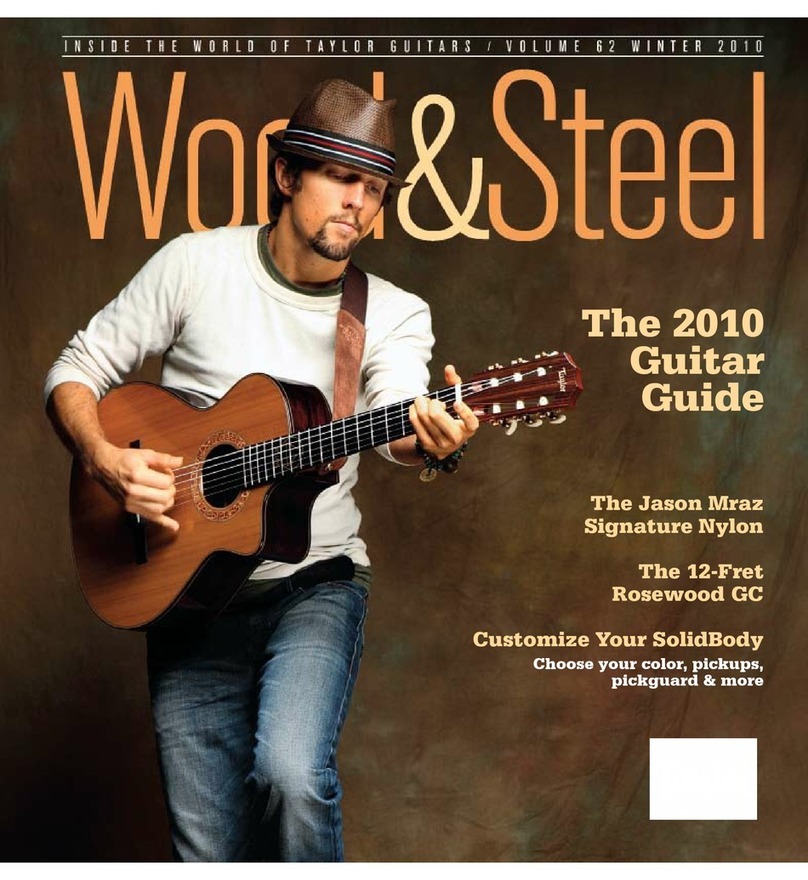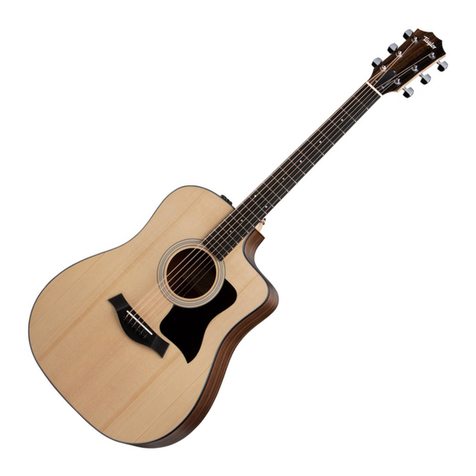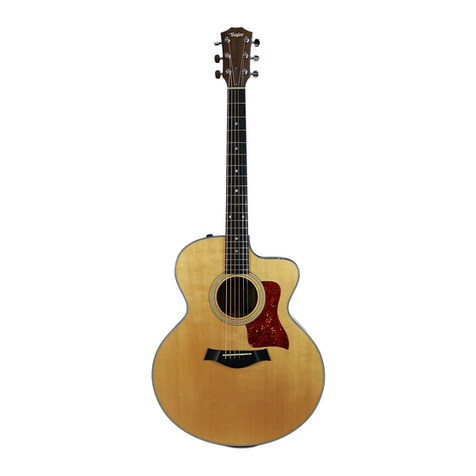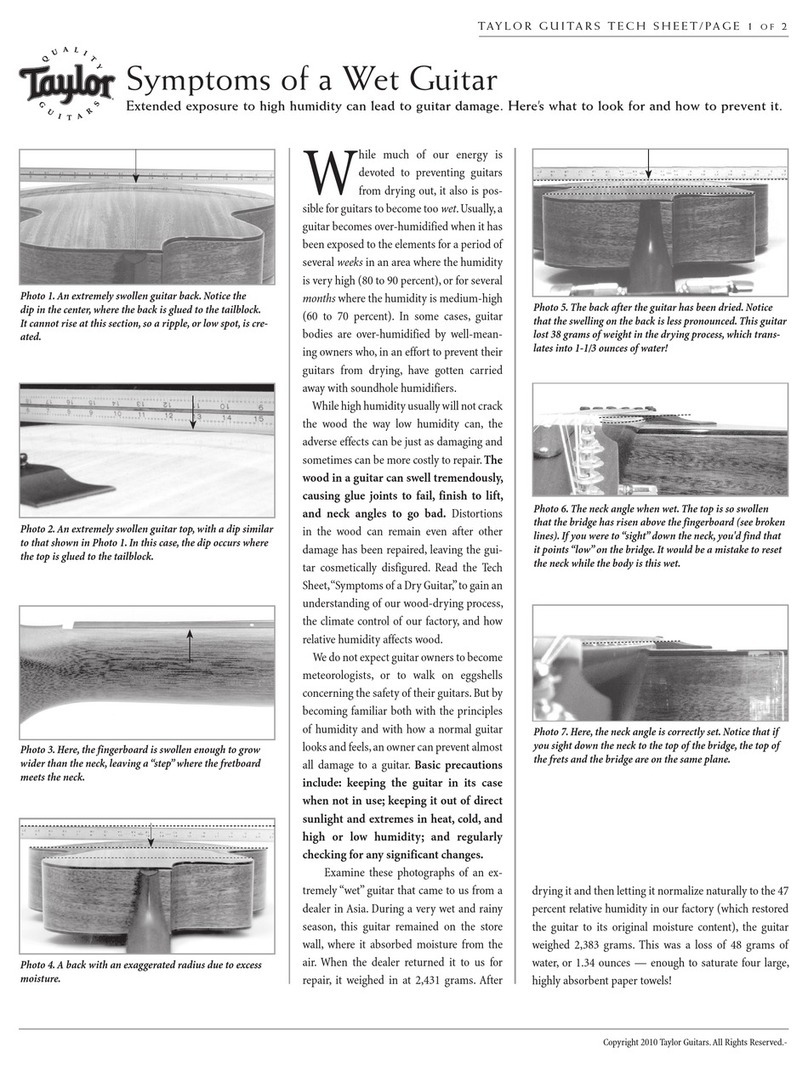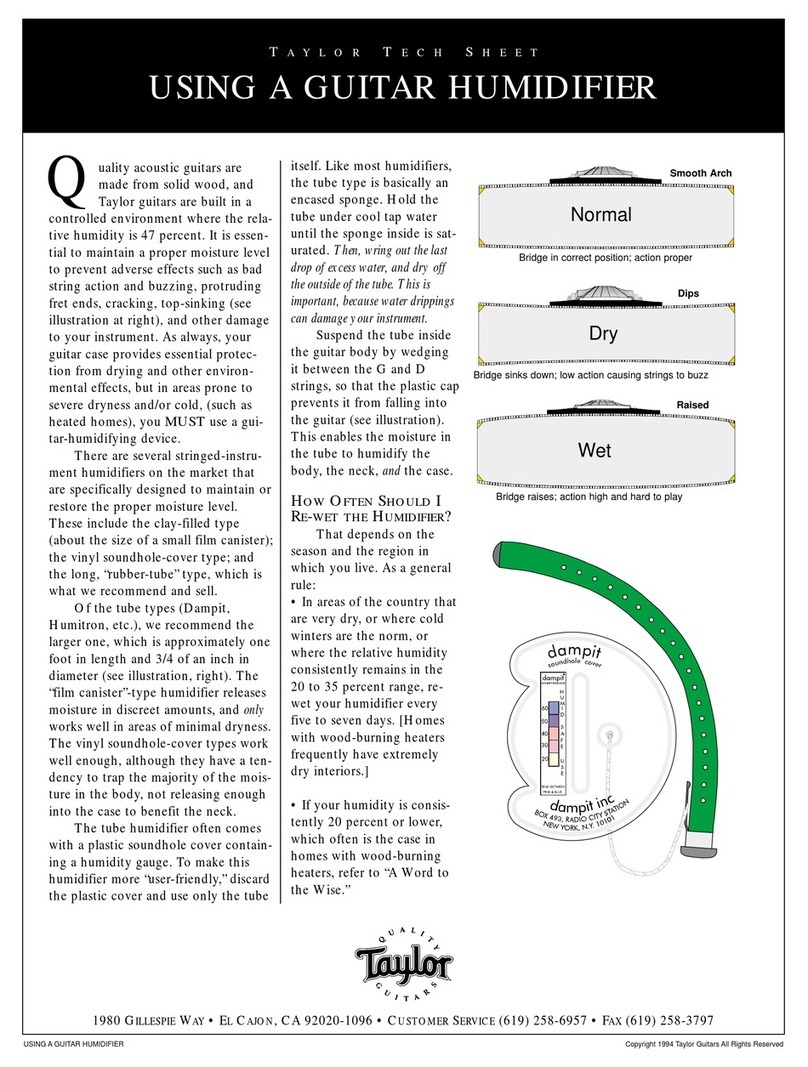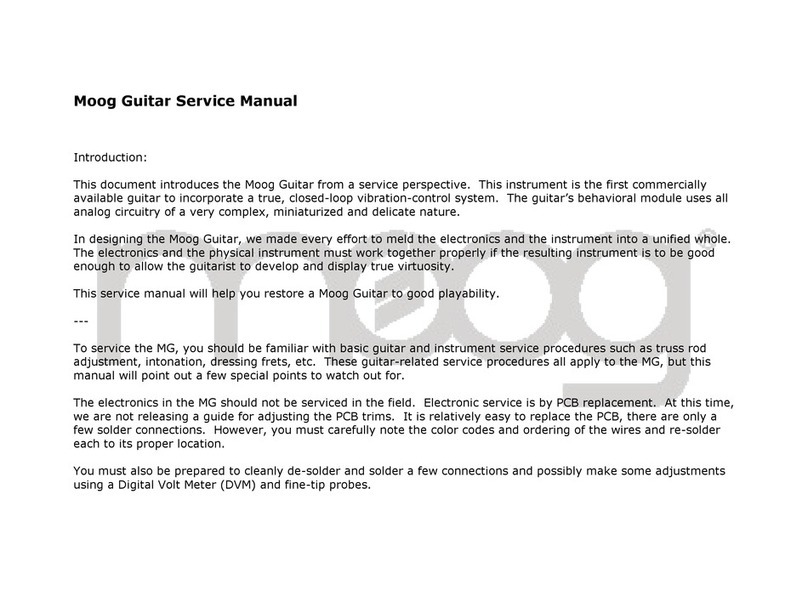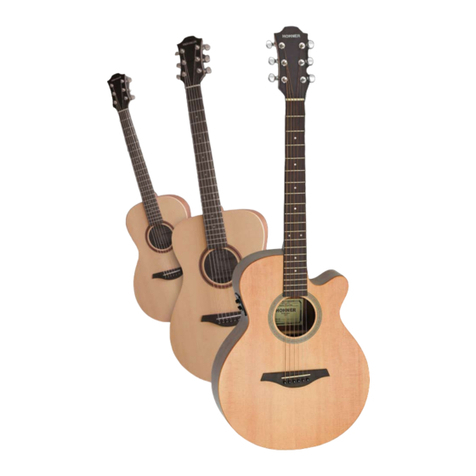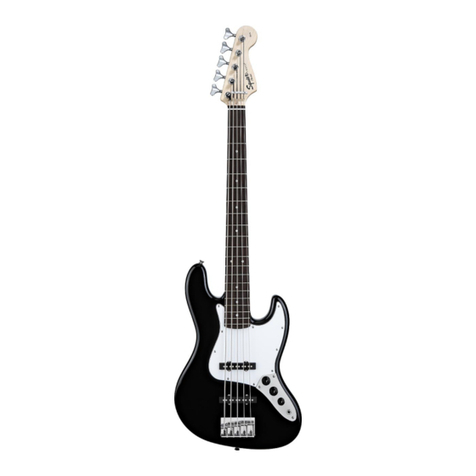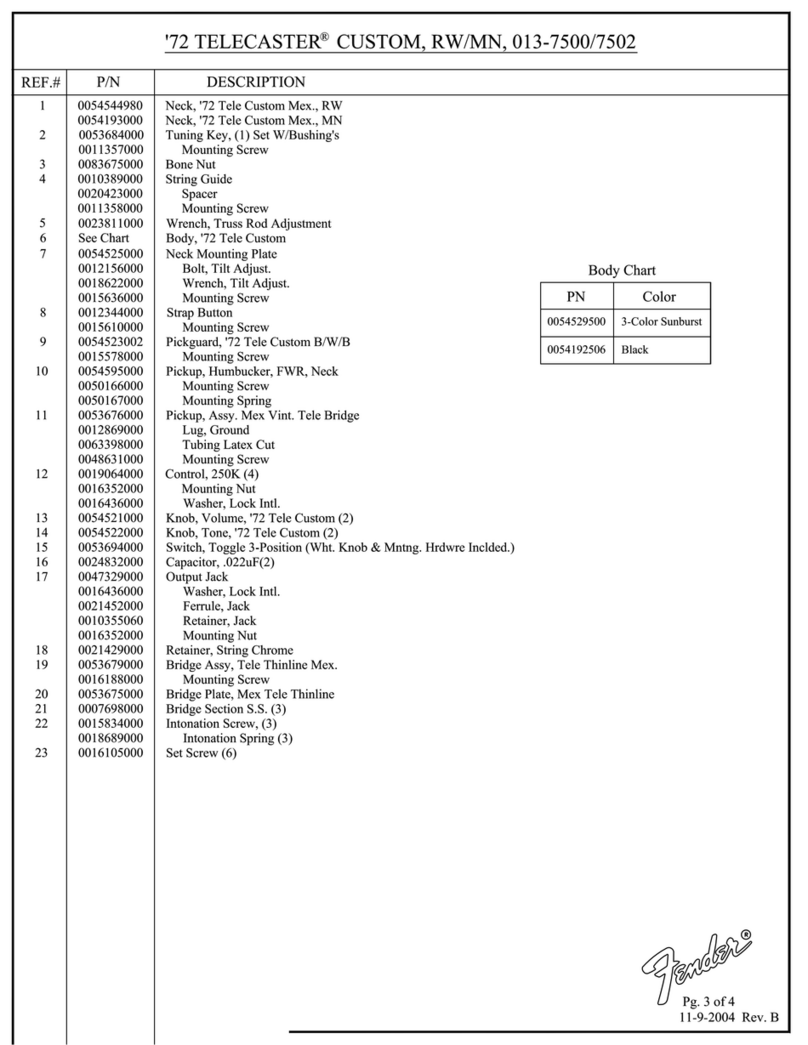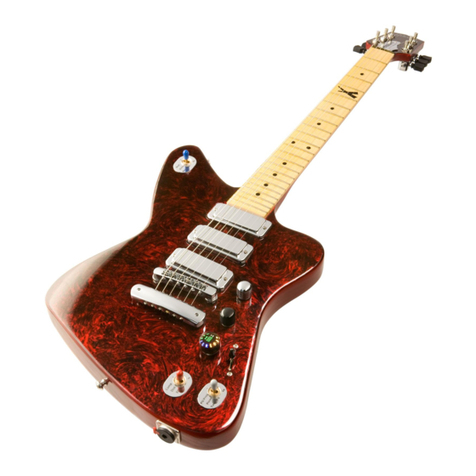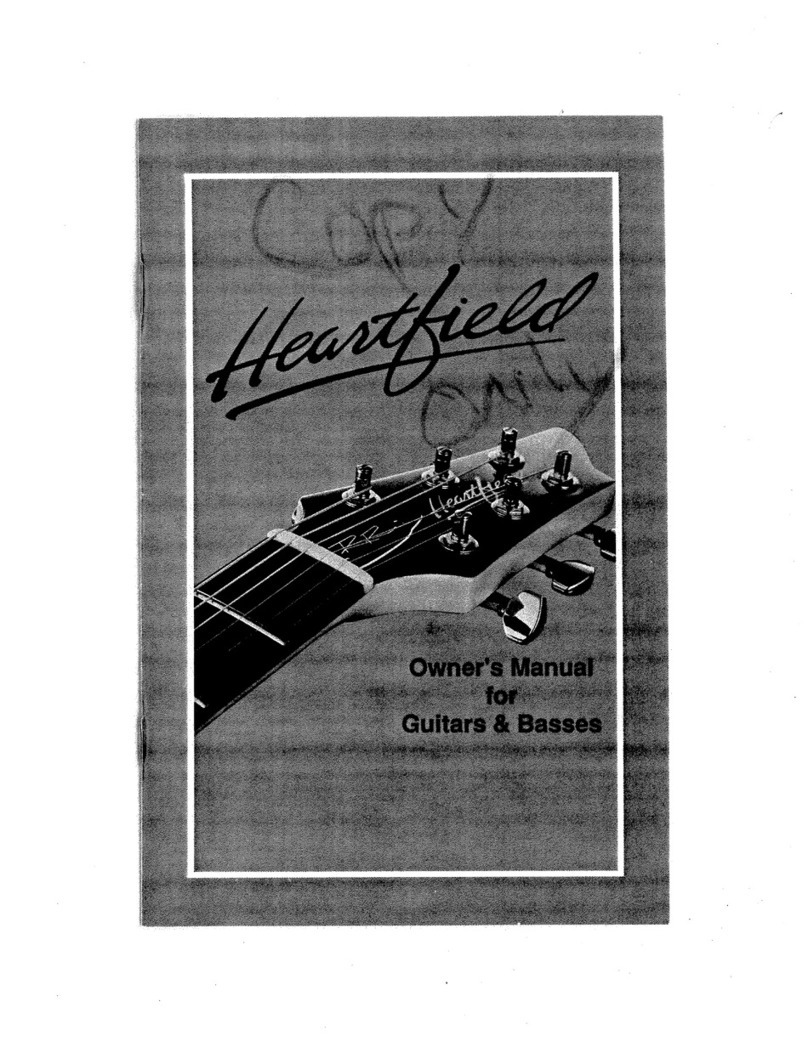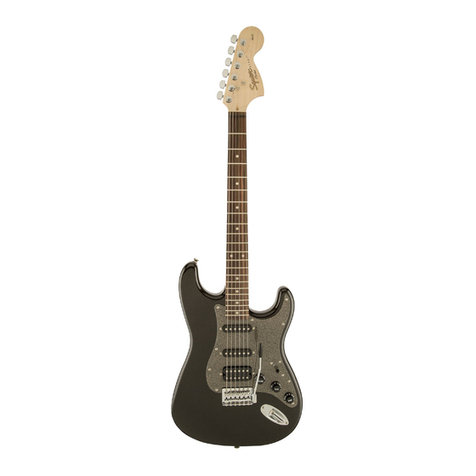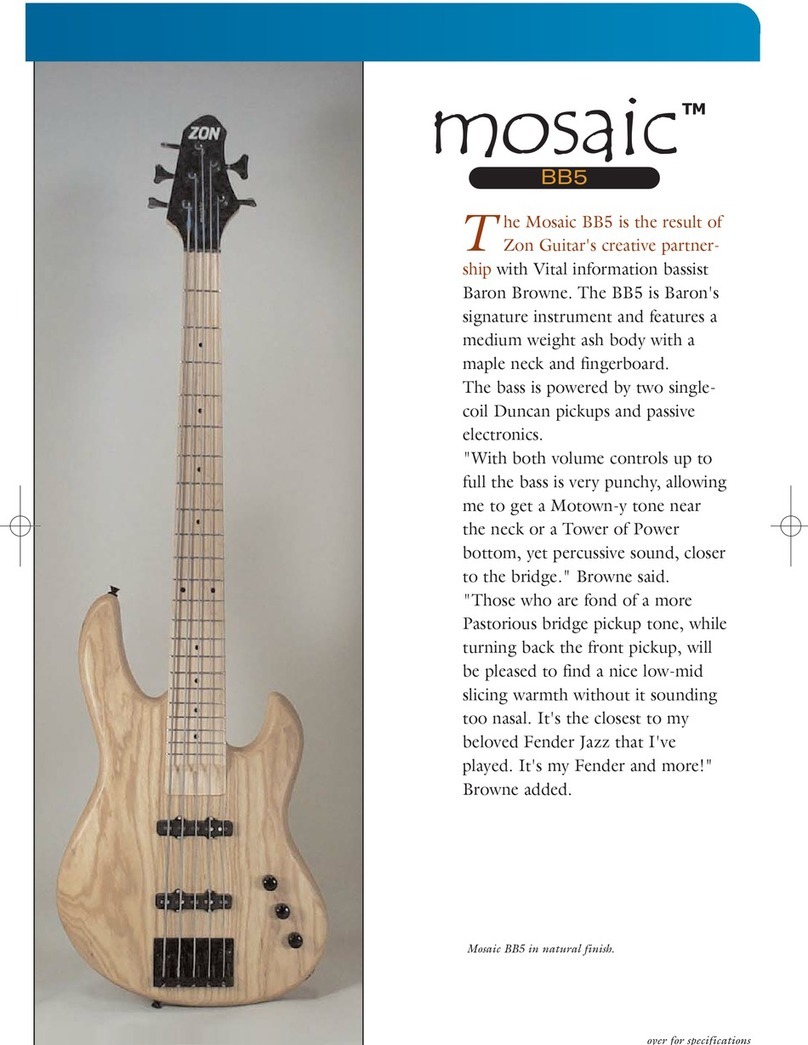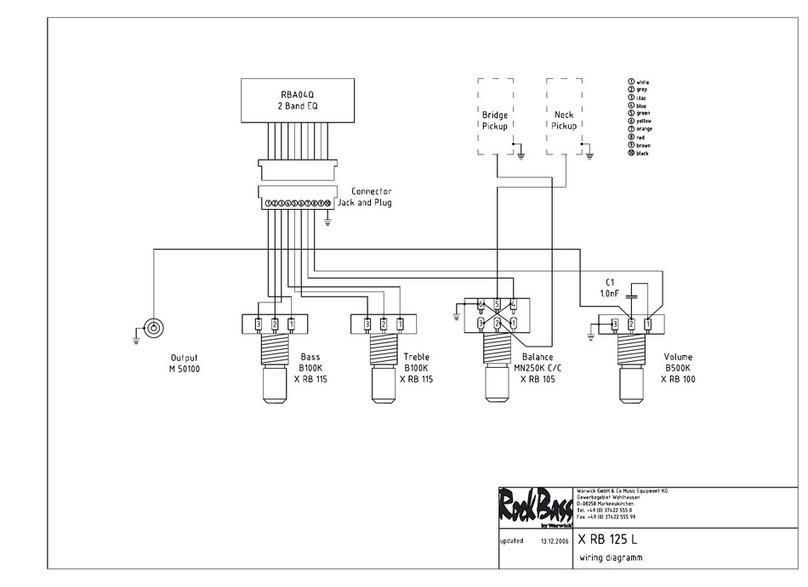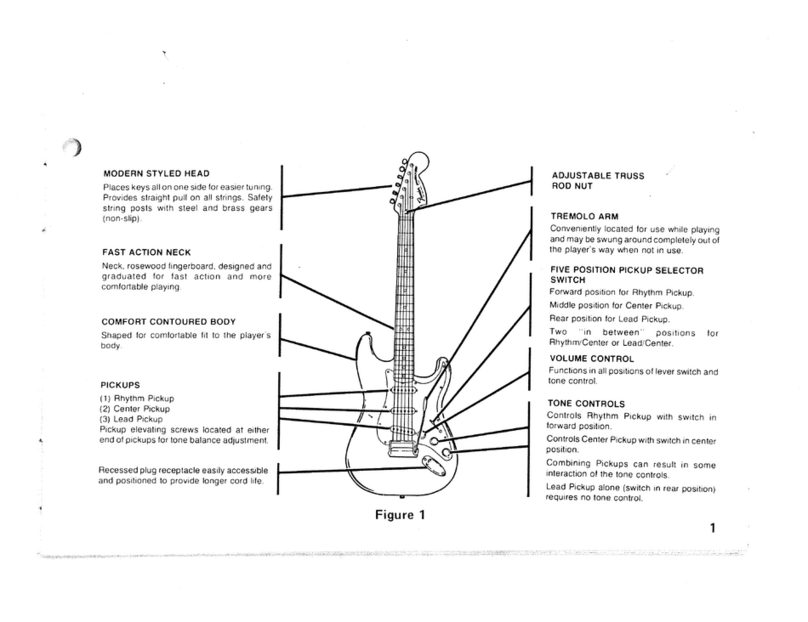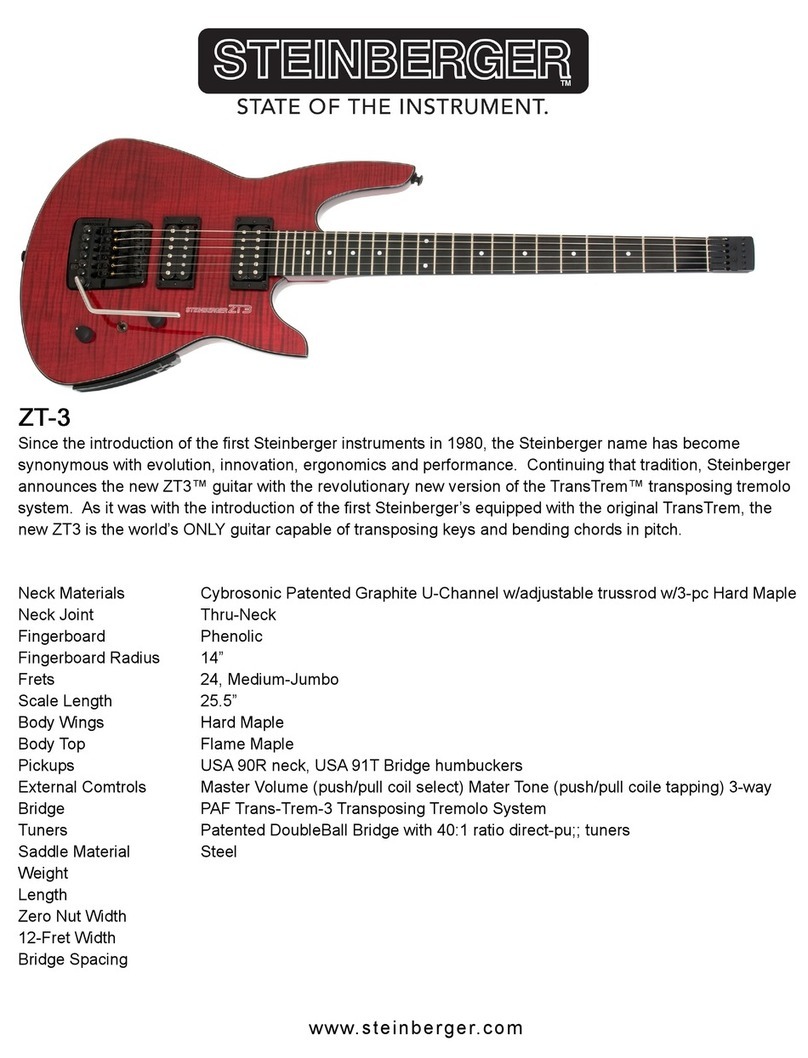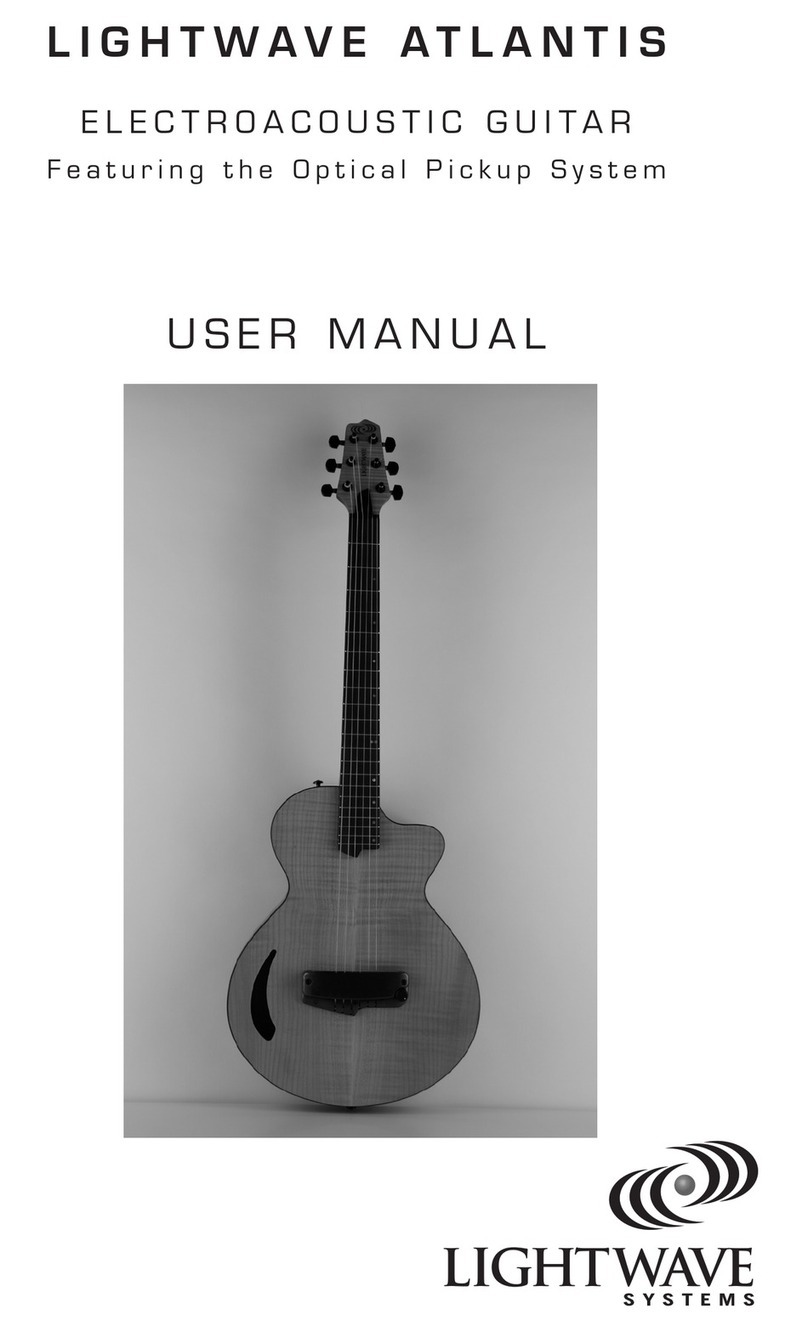
As more and more Taylor players succumb to the allure of our Nylon Series guitars,
calls from owners inquiring about the “proper” method of string-changing are
increasing. That’s as it should be; changing nylon strings differs considerably from
the process used for steel-string guitars, and there are right and wrong ways to do it.
Never fear — the procedure isn’t rocket science, and you don’t need to be a Sea Scout
with an advanced repertoire of sailing knots to pull it off with aplomb.
Let’s start with the basics. Classical and flamenco guitars are strung with
nylon strings that tie onto the bridge. This ancient system originally was
designed for “gut” strings, and there are a number of ways to tie them, some
more effective than others. Master repairman Tim Luranc and his colleagues at
Taylor have developed an outstanding protocol for this simple but often misunder-
stood procedure.
For best results, it’s important to understand how the strings hold onto
the bridge: the strings are looped around themselves, and the final loop must
pass “around the corner” of the back of the bridge. Now, let’s outline the
methodology in simple steps.
4. Pass the free end under the loop, below the back corner
of the bridge, creating a second bend in the string.
5. Hold the free end down so it won’t climb up over the cor-
ner, and pull the string tight to lock it in place. Leave approxi-
mately one inch of string pulled tight behind the bridge.
6. Pass the free end of the string toward the peghead, all the
way through the tuner hole, from the top down, leaving a little
slack. Make sure the top side of the tuner hole is pointed at a
slight upward angle, toward the peghead.
1. Here’s an example of a properly strung bridge. The string ends are looped under
to create a finished look.
2. Before putting on your new strings, we suggest that you place a Post-It note on top of
the guitar, behind the bridge, to prevent possible damage to the top while changing the
strings. Nylon strings often have one end loosely wound for greater flexibility. This
is the end that ties onto the bridge. Leave about three inches of string sticking out
behind the bridge.
Changing Nylon Strings the (new, improved) Taylor Way
3. Loop the free end under the string (from the treble side) just behind the saddle,
and pull it back toward the end of the guitar, creating a bend in the string.
by Anthony Adams / photos by Rita Funk-Hoffman
